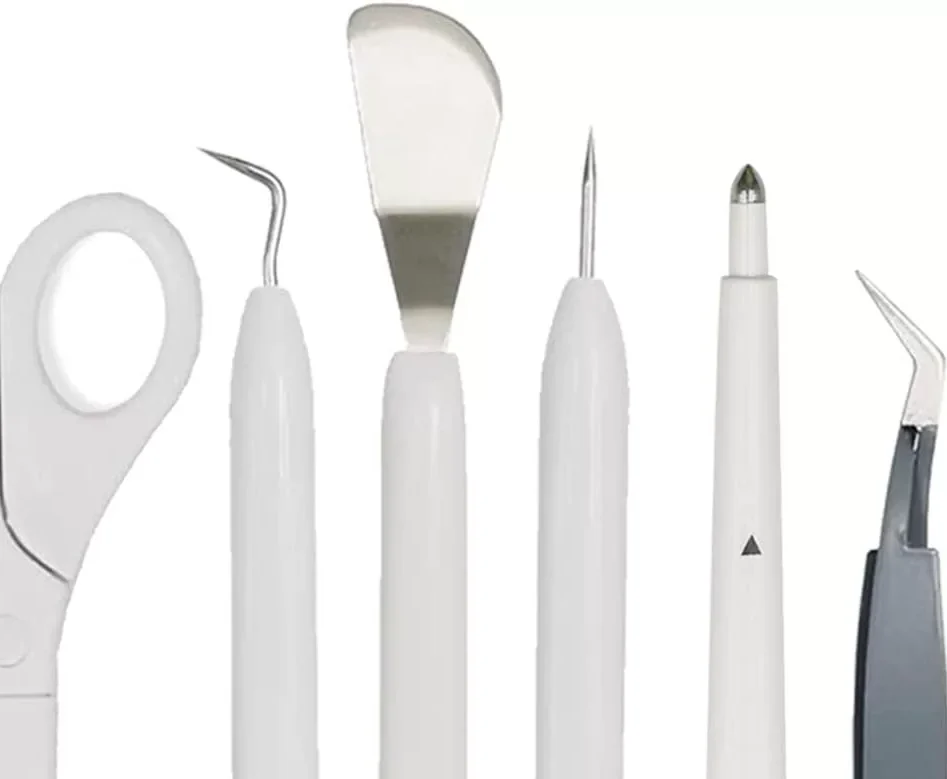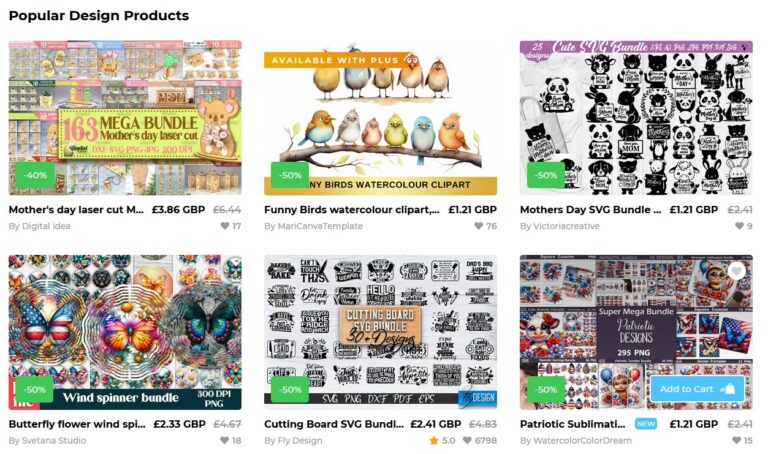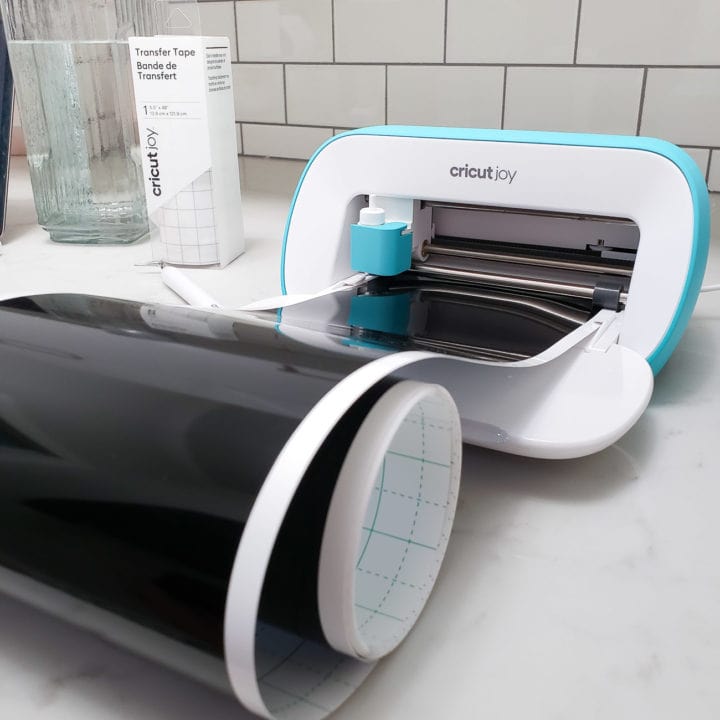How to Clean a Cricut Mat
You may be asking How to Clean a Cricut Mat? Cricut mat maintenance is an essential aspect of ensuring your Cricut machine operates efficiently and produces high-quality cuts. A clean mat not only enhances the precision of your cuts but also extends the lifespan of your tools. However, cleaning a Cricut mat is not as straightforward as it might seem. This article will provide a step-by-step guide on how to clean a Cricut mat effectively and safely.
Understanding how to clean a Cricut mat properly can save you the cost of frequent replacements and keep your crafting projects smooth and hiccup-free. Armed with the right information, you can easily maintain your Cricut mat in top-notch condition. Remember, a well-maintained Cricut mat is a key to excellent crafting outcomes. Let’s get started on extending the life and improving the performance of your Cricut mat.
Gather the Necessary Materials
In gathering the necessary materials for a thorough clean-up, it’s crucial to consider various items. Begin with cleaning cloths for surface wipe-downs. Then, a scraper is essential for removing stubborn residues. Also, an adhesive remover comes in handy for sticky situations. Additionally, don’t overlook the versatility of using baby wipes for gentle and effective cleaning. Lastly, a crucial step is understanding the manufacturer’s recommendations to ensure you’re using the correct cleaning methods and products.
Cleaning cloths
Transitioning from our previous discussion, let’s focus on the cornerstone of any cleaning task – the cleaning cloths. The type and quality of the cleaning cloths you use can significantly impact the effectiveness of your cleaning effort. Ensure you have a variety of cloths available, such as microfiber, terry cloth, and cotton. Microfiber cloths are excellent for dusting and polishing due to their ability to attract and hold dust particles. Terry cloth is perfect for heavy-duty cleaning, while cotton is ideal for its high absorbency. Keep these at hand, and you’ll be well-equipped for any cleaning challenge that comes your way.
Scraper
Next, let’s start to dig deeper into the specifics of our materials. There is a sort of satisfaction that comes from peeling off a stubborn sticker with a scraper. It’s a simple tool but one that can prove essential in our sticker removal journey. A scraper, preferably made of plastic to avoid any damage, provides a mechanical method of removal. It should be sharp enough to get under the edge of the sticker but not so sharp that it damages the underlying surface. Be mindful of the surface you’re working on, gentleness is key here. Remember, it’s not a race, but a meticulous process that requires patience and precision.
Adhesive remover
Transitioning from the initial preparations, let’s shift our focus to the pivotal aspect of the process: the adhesive remover. This is an essential component that works to break down the adhesive properties, thereby aiding in the removal of stubborn stickers, labels, or residue. It’s crucial to choose an adhesive remover that’s safe for the surface you’re working on. Always remember to wear protective gloves while applying the adhesive remover. Ensure to follow the instructions mentioned on the product. This might include leaving the remover on the adhesive for a certain period of time before attempting to scrape or wipe it off. The importance of using the right adhesive remover cannot be overstated in achieving a clean, residue-free surface.
How to Clean a Cricut Mat – Remove Larger Pieces of Debris
In the process of removing larger pieces of debris, a systematic approach is key to prevent damage. The first method, using a scraper, offers a broad-scale solution. However, always ensure to pick up debris with your hands to prevent scratching. The gentle scraping technique is crucial for delicate surfaces. For tiny particles, cleaning with tweezers is the most appropriate. Lastly, post-scraping maintenance ensures longevity of the cleaned surface.
Use a scraper
Transitioning from our preparation phase, we now delve into the actual cleaning process, beginning with the use of a scraper. Scrapers are incredibly efficient at removing larger pieces of debris. Always opt for a plastic scraper, as it is less likely to cause any damage to the surface you are cleaning. Your strokes should be firm but controlled – too much pressure can potentially cause scratches. It’s recommended to start from the edges and work your way towards the center. This method usually helps in collecting debris more effectively. Remember, the goal is not to scrape off the surface itself, but to carefully lift and remove the debris that clings to it.
Pick up debris with your hands
Having assembled all the necessary materials, you can now begin the actual process of debris removal. The next step is to pick up debris with your hands. Always ensure that your hands are clean before you commence this process. This is essential to prevent the introduction of new contaminants. Start with the larger, easily visible pieces of debris. Grasp them firmly yet gently, to avoid causing further damage, and lift them free. Remember that this method is best suited for larger, non-embedded debris. For smaller or embedded debris, other techniques will be required. It is necessary to stay patient during this process to ensure thorough and careful cleaning.
Gentle Scraping Technique
Now that you have your necessary materials at your disposal, let’s dive into the nitty-gritty of debris removal. Concentrating on the Gentle Scraping Technique, it is crucial to handle this task with utmost care to avoid damaging your item. Begin by holding your scraper at a 45-degree angle against the surface. Apply consistent, light pressure as you slide the edge of the scraper across the debris. Remember, the goal is to dislodge the debris without scratching or damaging the surface. As you gradually work through the debris, periodically wipe your scraper clean to prevent debris build-up. This technique requires patience and precision, but with practice, you’ll become proficient.
Clean the Mat with a Cleaning Cloth
To successfully clean the mat with a cleaning cloth, a few key steps must be observed. The first step is the use of a lint-free cloth, which ensures no residue will be left behind. This should be used in a gentle, circular motion to effectively remove dirt and stains. However, for handling stubborn stains, a more thorough approach may be necessary. Post-cleaning, the drying process is crucial to prevent any mildew or bacterial growth. Lastly, regular maintenance after cleaning guarantees the longevity of your mat.
Use a lint-free cloth
Having cleared the mat of larger debris, it’s time to focus on the finer details. Using a lint-free cloth is crucial for this process. This type of cloth is preferred because it won’t leave behind any unwanted particles on the mat. Remember, the goal here is cleanliness, not to introduce new debris. To clean the mat effectively, gently move the cloth in a circular motion. This motion helps in lifting and removing the dirt without causing any damage to the mat surface. It’s vital to use a clean cloth, so ensure you swap it out as it gets dirty. This will ensure that you’re not just spreading the dirt around.
Use a gentle, circular motion
Having removed the larger pieces of debris, we can now transition into the finer aspect of cleaning the mat. One of the key steps in this process involves the use of a gentle, circular motion with your cloth. Never scrub vigorously as it can harm the mat’s surface. Instead, gently move your lint-free cloth in small, circular patterns across the mat. This method is not only gentle on your mat but also very effective at lifting and removing dirt particles. Remember, the goal is to clean without causing any damage, hence the need to keep your motions soft and controlled. In the following sections, we will cover how to handle stubborn stains and the drying process.
Handling stubborn stains
Now that you have removed large debris, you may notice some stubborn stains that could not be removed by mere dusting. Handling stubborn stains requires a bit more attention. Firstly, identify the type of stain; it could be grease, ink, or food residue. It’s recommended to use a mild cleaning solution or a cleaner specifically designed for mats. Be sure to use a small quantity first, to avoid discoloration or damage. Apply it on the stain, let it settle for a few minutes, then gently rub with a lint-free cloth in a circular motion. Remember, the aim is to lift the stain off the mat, not to spread it around.
How to Clean a Cricut Mat – Apply Adhesive Remover
To apply adhesive remover effectively, there are five crucial steps to take. First, Use a small amount to avoid excess residue. Second, Carefully rub over the surface, ensuring even distribution. The third step is Scrubbing the Mat, which helps to lift and break down the adhesive. Fourth, Rinsing off the Remover is essential to clear the surface of any remaining solution. Finally, Drying the Mat is key to prevent any potential damage caused by moisture. Following these subtopics will ensure efficient application of adhesive remover.
Use a small amount
Now that your mat is clean and free of dust, it’s time to address any sticky residue that may be left behind. The next step is to apply adhesive remover. Remember, less is more when it comes to using adhesive remover. Start with a small amount, no bigger than a dime. It’s easy to add more, but difficult to remove excess once it’s applied. Apply it in a circular motion, taking care to distribute it evenly across the mat surface. Moderation and precision are key factors in this step, to ensure successful removal of any remaining sticky residue.
Carefully rub over the surface
Rejoice, as you’ve successfully cleaned your mat with a cloth and now we’re conquering the next level of cleanliness! Now let us move on to the careful application of the adhesive remover. Gently apply a small amount of adhesive remover onto the mat. Carefully rub over the surface in a circular motion, ensuring you cover all spots with glue or stubborn stains. This process requires patience and precision, so take your time and focus on one area at a time. Remember, the goal is not to soak the mat but to delicately remove the adhesive residues.
Scrubbing the Mat
Moving on from the initial cleanse, we now enter the rigorous phase of scrubbing the mat. Be sure to wear gloves during this process to protect your skin from the adhesive remover. Scrubbing the mat is crucial in ensuring that all stubborn traces of adhesive are completely removed. Use a scrubbing brush with stiff bristles for this task. Do not scrub too hard, as this could damage the mat. Instead, apply consistent, moderate pressure, ensuring to cover the entire surface of the mat evenly. Remember, the goal is to fully eliminate the adhesive, not to wear down your mat.
How to Clean a Cricut Mat – Wipe Off the Adhesive Remover
Begin the removal process by using a damp cloth to gently scrub off the adhesive. It’s crucial to wipe in a circular motion, as this method effectively lifts off the residue. Following the scrubbing, the focus turns towards cleaning residue. Ensure to remove all lingering traces for a thorough cleanse. Subsequently, the mat drying process comes into play. Let the mat air dry for optimal results. Finally, maintaining mat cleanliness is key. Regular cleaning ensures longevity and prevents adhesive build-up. Wiping off the adhesive remover is a simple yet meticulous process that requires careful attention.
Use a damp cloth
Transitioning from the application of the adhesive remover, it’s time to embrace the next step: the removal process. Begin by using a damp cloth. Ensure the cloth is not soaking wet but just sufficiently moist. This approach helps in effectively picking up the dissolved adhesive without spreading it further. Gently, but firmly, press the damp cloth against the area where the adhesive remover has been applied. Avoid harsh scrubbing as it could damage the surface. Remember, patience is key here. As you proceed, you may need to rinse and wring out the cloth a few times to keep it clean. This initial cleanup is a crucial part of maintaining your mat’s cleanliness and preparing it for the subsequent steps.
Wipe in a circular motion
Having successfully applied the adhesive remover, let’s now transition to the crucial step of wiping it off. Wiping in a circular motion is highly recommended to ensure even distribution and thorough cleaning. Start from the center of the mat, gradually moving towards the edges. This technique helps lift off the adhesive particles effectively, reducing the risk of residue build-up. Remember, an efficient wiping process is integral to maintaining the cleanliness and longevity of your mat. Stay tuned for the subsequent steps that involve cleaning residue and the mat drying process.
cleaning residue
Feeling a sense of achievement after applying the adhesive remover, it’s time to focus on the next crucial step – cleaning residue. With the adhesive remover having done its job, you’re likely to find some leftover residue. It’s imperative to ensure that this residue is thoroughly cleaned. This is where a damp cloth comes into action; it will be your best friend in this process. Wipe the mat with the damp cloth, focusing on the areas where the residue is visible. Remember, a clean mat not only looks better, but it also functions better, ensuring your tools or equipment stay in optimal condition.
How to Clean a Cricut Mat – Allow the Mat to Air Dry
After washing, it’s imperative to hang the mat up for air drying. This process allows it to dry evenly and thoroughly. The Time Duration for Air Drying depends on several factors, including humidity levels and mat thickness. It’s essential to prevent Dust Accumulation during Air Drying by choosing a clean, dust-free area. After Air Drying, the next steps include checking for any damp spots and storing the mat properly to maintain its quality.
Hang the mat up
Now that we’ve successfully banished your mat’s adhesive residue, let’s move to the next crucial stage in our mat restoration process: air drying. At this juncture, you’ll need to hang the mat up. Hanging the mat up is a simple yet effective method that promotes even drying and prevents moisture accumulation that could lead to mildew or mold growth. To do this, you can use a clothesline, drying rack or any available horizontal bar. Ensure the mat is fully spread out and avoid folding it, to facilitate faster drying. Remember, the objective is to let gravity do its job, pulling down any remaining moisture.
Allow to air dry completely
Transitioning from the process of wiping off the adhesive remover, the next pivotal step involves allowing the mat to air dry completely. This is a crucial aspect of the cleaning process to ensure an optimal end result. It is advised to place the mat in a well-ventilated area where it can fully dry. Avoid exposing it to direct sunlight as it can cause discoloration or degradation of the material. Patience is key in this phase, as rushing the drying process by using artificial means such as blow dryers or heaters can cause damage to the mat. Remember, the objective here is to allow the mat to naturally air dry completely.
Time Duration for Air Drying
After successfully ridding your mat of any lingering adhesive remover, let’s move on to the drying phase. The time duration for air drying depends on several factors, such as the material of the mat, the thickness, and the climate conditions. On average, it can take anywhere from 24 to 48 hours for a mat to air dry completely. During this period, it is crucial not to rush the process. Speeding up the drying process can lead to damage or shrinking. Please be patient and allow your mat to regain its dry and clean condition naturally. We will discuss the next steps after air drying in the upcoming section.
How to Clean a Cricut Mat – Inspect the Mat
After Inspecting the Mat, you should Look for any remaining debris to ensure cleanliness. Next, Inspect for any remaining adhesive residue as this may affect the mat’s usability. Subsequently, it’s important to Assess Adhesiveness Levels to ensure it can securely hold in place. Furthermore, Examining Mat Thickness aids in determining its durability and comfort level. Lastly, Inspecting Mat Edges is crucial to identify any potential wear and tear which could pose safety hazards.
Look for any remaining debris
Now that your mat is dry, it’s time to give it a thorough once-over. Looking for any remaining debris is the first step in this inspection process. Cast a keen eye over the surface of your mat, checking every inch meticulously. Debris can sometimes get embedded in the material, which could affect the performance and lifespan of your mat. If you do find any lingering particles, they should be removed immediately to avoid further damage. Remember to take your time during this process, as rushed inspections often miss small but significant pieces of debris.
Inspect for any remaining adhesive residue
Having given the mat ample time to air dry, your attention can now shift towards the inspection of the mat. A key focus should be on inspecting for any remaining adhesive residue. Run your fingers gently across the surface of the mat. Observe if there’s a sticky, tacky feeling, which is a clear sign of lingering adhesive residue. Using a magnifying glass can also be beneficial, providing a more detailed view. If residue is found, it’s crucial to remove it promptly to prevent any potential damage. Remember, a clean, adhesive-free mat ensures better performance and longevity.
Assessing Adhesiveness Levels
As the last droplet of water evaporates, leaving the mat looking as good as new, it’s time to turn your attention to assessing the mat’s adhesiveness. This involves a thorough inspection to ensure that the mat is still sticky enough to serve its purpose effectively. To do this, lightly run your fingers over the surface of the mat. The mat should feel slightly tacky to the touch, but not overly sticky. If the mat feels too slick or too sticky, it may need to be cleaned again or replaced. Adhesiveness is crucial to ensure the mat’s functionality and longevity. This step is significant in maintaining the mat’s top-notch performance level.
How to Clean a Cricut Mat – Re-apply Adhesive to the Mat
First, we’ll delve into the benefits of using a Cricut brand adhesive for your mat. Next, we’ll discuss how to apply in a thin, even layer to ensure optimal performance. A step-by-step guide to reapply adhesive will then be provided for clarity. Afterwards, we’ll focus on ensuring even application, an important step often overlooked. Lastly, we’ll explore the crucial phases of the drying time and process to guarantee a successful application.
Use a Cricut brand adhesive
Having thoroughly inspected the mat, we are now stepping into the crucial phase of rejuvenating it. The first and foremost step is to choose an adhesive. Our recommendation is to use a Cricut brand adhesive for optimal results. Cricut brand adhesive is specifically designed to complement Cricut mats, ensuring longevity and improved performance. It provides a strong and durable bond, yet it’s gentle enough not to damage your mat. Embracing the right adhesive is a pivotal step in this process, and using a Cricut brand adhesive can make a significant difference. In the following sections, we will guide you through its application procedure.
Apply in a thin, even layer
Bidding farewell to the inspection phase, we’re now set to embark on a journey of restoration. Our next step is crucial to ensure a long life for your mat: Applying adhesive in a thin, even layer. Using a Cricut brand adhesive, follow these guidelines to achieve a perfect application.
Begin by pouring a small amount of adhesive onto the mat. Distribute it evenly using a soft-bristle brush or a plastic scraper, taking care to maintain a thin layer. A thick application can lead to uneven drying and poor adhesion. Remember, less is more when it comes to adhesive application. The goal is a fine layer that covers the entire mat, without any excess pooling.
Step-by-step Guide to Reapply Adhesive
Having thoroughly examined your mat, we can now progress to the process of reapplying adhesive. Begin by obtaining a bottle of Cricut brand adhesive, ensuring it is well-shaken. With the mat flat on a clean work surface, slowly apply the adhesive, starting from one corner and making your way across the mat in a systematic manner. Aim for an even, thin layer across the entire surface. Take care not to oversaturate any particular area, as this can lead to uneven adhesion and potential damage to your materials. Once you have completed the application process, set the mat aside in a clean, dust-free environment to allow for the adhesive to properly dry.
Conclusion
Maintaining your Cricut mat in good condition is essential for ensuring optimal cutting performance. A clean mat not only enhances the precision of your cuts but also extends the lifespan of your mat. Regular cleaning and re-application of adhesive can make a significant difference in your crafting experience.
Remember, patience is key when cleaning your mat. Allow sufficient time for the adhesive remover to work and the mat to air dry. With proper care, your Cricut mat can serve you well for many creative projects to come.









